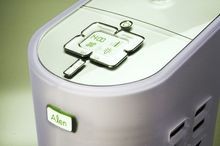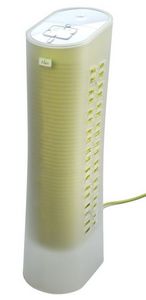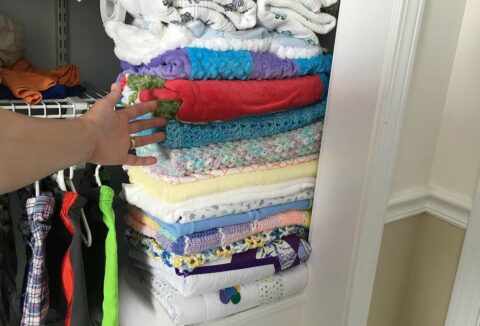 Americans spend 90% of our time indoors and between 80%-90% of most people’s exposure to pesticides occurs indoors.
Americans spend 90% of our time indoors and between 80%-90% of most people’s exposure to pesticides occurs indoors.
With statistics like that, why is indoor air quality not a larger concern?
In fact, various studies have shown that indoor air pollution can be 2-5 times worse than the air pollution outside!
Clearly this is a problem more of us could easily remedy. Enter AirMD, "the first and only green air purifier on the U.S. market".
So what makes it so green?
Before we answer that question, let me first tip my hat to the foks over at CNET’s gadget and tech blog, CRAVE, for turning me on to the AirMD.
The American Lung Association says that indoor air pollutants range from asbestos to formaldehyde to mold.
If, like me, you thought that your home was free of such things, formaldehyde, for example, can be found in:
- adhesives/bonding agents
- carpets
- upholstery
- particle board
- plywood paneling
What Makes the AirMD So "Green" and Beneficial?

 Qualified & Safe:
Qualified & Safe:It’s lead-free, EnergyStar qualified and ozone safe
 Uses Top Purification Technologies:
Uses Top Purification Technologies:
HEPA Filter, Ionizer, and long lasting (3-5 years) UV lamp
 Programmable:
Programmable:
Clock feature lets you program fan speed changes throughout the day
 Efficient:
Efficient:
Best performance up to 400 sq.ft. (means it’ll work in the average American living room, which is 256 ![]() sq ft.).
sq ft.).
 Aesthetically Sexy:
Aesthetically Sexy:
Light touch activation controls, air vents hidden on sides and back, and translucent outer core with 2 color choices on inner core: white, bamboo green
The AirMD won’t be available until July of this year, and at $499, it’ll actually be quite a bargain. (If you research other purifiers with similar technologies, you’ll discover that one for yourself.)
That said, good quality air purifiers are the last resort on indoor pollution control. The EPA recommends controlling the source of the pollution and utilizing better ventilation practices before investing in the last line of defense that is an air purifier.
What are your favorite tricks for reducing indoor air pollution?
I think every little step toward living green is an awesome one… but eco-snobbery sucks! My goal is to help newbies learn the most important steps toward living green — individually and collectively. Personally, I strive to have as little impact as possible on Planet Earth while I'm here.






